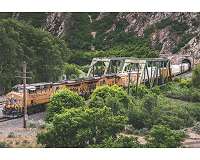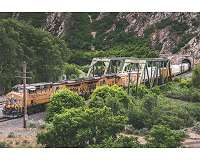Northrop Grumman reports that the segments for both rocket boosters that are going to be employed to launch NASA’s first Space Launch System (SLS) rocket for its Artemis I assignment have arrived at Kennedy Space Center in Florida.
The booster segments will be the elements of the SLS rocket to be stacked for its launch of Artemis Ipersonally, as well as the finished boosters will provide more than 75% of the first thrust for launch.
“New technologies and material upgrades permit the boosters to fulfill the high performance demands of SLS, the most powerful rocket NASA has assembled to date,” explained Charlie Precourt, vice president, propulsion systems, Northrop Grumman. “Our technology can help propel the first woman and the following person to the moon.”
Artemis I is the first in a series of missions that will allow human exploration to Mars and the moon. It’s the Orion spacecraft, SLS rocket the first launch of NASA space exploration platform as well as the floor systems in Kennedy Space Center.
NASA and Northrop Grumman conducted a series of ground tests beginning in 2010 to meet requirements for the five-segment booster’s certification. Two qualification tests and three demonstration engine evaluations demonstrated ascent thrust capacities and the liftoff of the booster are fully qualified for use with anticipated first flight at 2021, on NASA’s SLS rocket.
Northrop Grumman continued its venture and has provided rocket propulsion into NASA. Leveraging the achievement and flight-proven design of this shuttle boosters, the new configuration guarantees reliability and provides lower production costs.
From the first lunar lander into the space shuttle boosters, to providing the International Space Station with vital cargo, Northrop Grumman has pioneered new products and ideas that have been put into orbit, on the skies, also from deep space for at least 50 years.
As a part of the Artemis program of NASA, we are building on our assignment heritage with new inventions to allow NASA to return humans to the moon.
– Advertisement –


